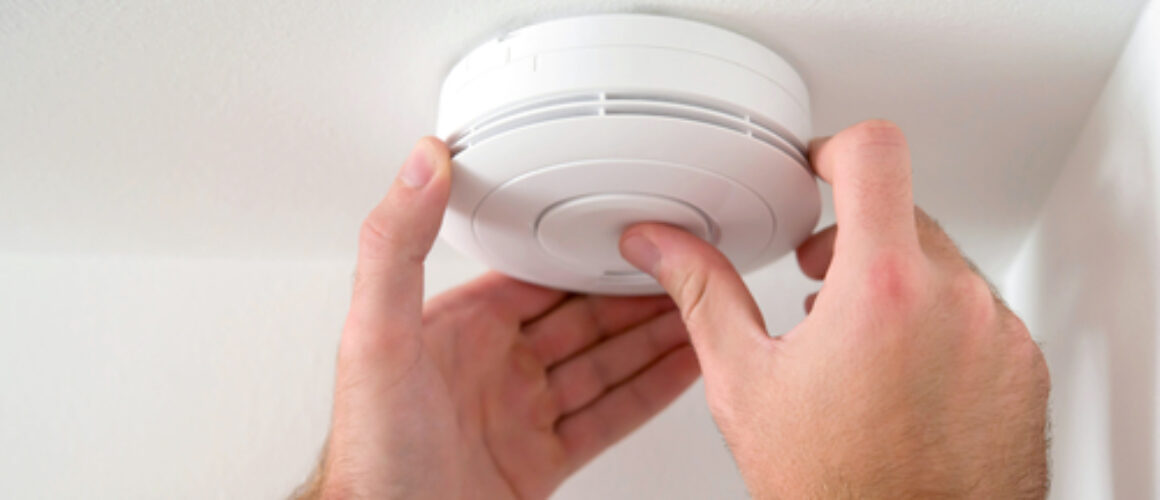Exploring Advanced Technologies in Fire Detection Systems
Welcome to the world of advanced fire detection systems! In this blog post, we will delve into the fascinating realm of cutting-edge technologies that are revolutionizing fire safety. Understanding how these systems work and their numerous benefits is crucial for ensuring the safety of your home or business. Join us as we explore the latest advancements in fire detection systems and learn how you can choose the right one for your needs. Let’s dive in!
Understanding Fire Detection Systems
Fire detection systems are crucial for the safety and protection of buildings and their occupants. These systems employ advanced technologies, including addressable fire alarm panels, to detect smoke or heat and promptly notify occupants in case of a fire emergency. By quickly identifying potential fires, these systems allow for swift evacuation and may help prevent extensive damage or loss of life.
Addressable fire detection systems offer several advantages over traditional systems. They provide detailed information about the location of a possible fire, allowing responders to take appropriate action more efficiently. Additionally, addressable systems can be integrated with other building management technologies for enhanced control and monitoring capabilities. With their advanced features and reliable performance, addressable fire detection systems play a vital role in safeguarding properties from the devastating effects of fires.
What are Fire Detection Systems?
Fire detection systems are advanced technologies designed to detect the presence of fire and alert occupants or authorities. These systems have a long history dating back several decades and have evolved significantly with technological advancements. Key features of fire detection systems include their ability to identify smoke, heat, or flames through various sensors and detectors. Additionally, addressable fire detection systems offer the advantage of pinpointing the exact location of a potential fire, allowing for quick response and efficient evacuation measures.
Why are Fire Detection Systems Important?
Importance in protecting lives and property: Fire detection systems play a crucial role in safeguarding lives and property. These advanced technologies ensure early detection of fires, allowing for prompt evacuation and intervention. By quickly alerting occupants to the presence of smoke or fire, these systems significantly reduce response time, minimizing potential injuries or fatalities.
Impact on early warning and prevention: Fire detection systems provide an invaluable early warning system that allows for swift action to be taken before a fire escalates. With their ability to detect smoke, heat, or flames at the earliest stages, these systems enable firefighters to addressable extinguish the fire before it spreads uncontrollably. This not only prevents significant damage but also reduces the risk of secondary hazards such as explosions or toxic gas emissions.
Legal requirements and regulations: Complying with legal requirements and regulations is essential when it comes to fire safety. Fire detection systems are often mandatory in commercial buildings, public spaces, and residential complexes as per local building codes. Installing these systems ensures adherence to regulatory standards while providing peace of mind knowing that necessary measures have been taken to mitigate potential risks associated with fires.
Types of Fire Detection Systems
Conventional fire alarm systems are a basic type of fire detection system that uses manual call points, smoke detectors, and heat detectors to detect the presence of fire. These systems are cost-effective and widely used in small buildings or residential areas.
Addressable fire alarm systems offer advanced features such as individual device identification and remote control capabilities. Each device on the system has its own unique address, allowing for precise detection and faster response times during emergencies. This makes them suitable for large commercial buildings or complexes.
Aspiration smoke detection is a highly sensitive type of fire detection system that continuously samples air from the environment to detect even trace amounts of smoke particles. It provides early warning by detecting fires at their incipient stage, making it ideal for critical environments like data centres or museums where prompt action is necessary to prevent damage.
Components of Fire Detection Systems
Smoke detectors, heat detectors, and fire alarm panels are essential components of fire detection systems. Smoke detectors work by sensing the presence of smoke particles in the air and triggering an alarm to alert occupants of a potential fire. Heat detectors, on the other hand, detect changes in temperature and activate alarms when it exceeds a certain threshold. Fire alarm panels serve as control centres that receive signals from various sensors and provide visual or audible alerts for immediate action. These components play a crucial role in ensuring early detection and timely response to fire emergencies.
Addressable technology is often incorporated into these components, allowing them to communicate with each other through a central control panel. This advanced feature enables precise identification of the exact location where smoke or heat is detected within a building, facilitating more efficient evacuation procedures and targeted firefighting efforts. By combining addressable capabilities with reliable smoke detection, accurate heat monitoring, and responsive alert systems provided by these components, fire detection systems can greatly enhance overall safety measures for both residential and commercial settings alike.
Advanced Technologies in Fire Detection Systems
Addressable fire detection systems utilize advanced communication protocols to provide precise information on the location of a fire, enabling quick response and minimizing damage. These systems integrate with building management systems for centralized monitoring and control.
Wireless fire detection systems offer flexible installation options without the need for extensive cabling, making them ideal for retrofitting existing buildings. With improved battery life and robust wireless protocols, they ensure reliable fire detection while reducing installation costs.
Video fire detection systems employ intelligent video analytics algorithms to detect smoke or flames in real-time from CCTV footage. By analyzing patterns and changes in pixel values, these systems enhance early warning capabilities and improve overall safety measures.
Aspirating smoke detection (ASD) systems use air sampling technology to actively draw air into detectors for continuous monitoring. This method allows for early-stage smoke identification, providing an opportunity for prompt action before a potential fire outbreak occurs.
Intelligent multi-sensor fire detection systems combine multiple sensors such as heat, smoke, gas, and flame detectors into a single unit. By collecting data from various sources simultaneously, these integrated devices offer enhanced accuracy in detecting fires while minimizing false alarms.
Incorporating these advanced technologies into your fire protection strategy can significantly improve safety measures by increasing the speed of alarm notification and allowing proactive response efforts. Stay ahead of potential threats with cutting-edge solutions tailored to your specific requirements.
Addressable Fire Detection Systems
Enhanced fire detection accuracy ensures early identification and prompt response to potential fire threats. By using advanced technology, addressable fire detection systems can quickly identify the exact location of a fire, enabling immediate action to be taken. These systems also offer easy expansion and integration with other safety systems, providing a comprehensive solution for protecting buildings against the risk of fires.
Wireless Fire Detection Systems
Wireless fire detection systems offer a flexible and efficient solution for protecting buildings against the threat of fire. With no requirement for extensive wiring, these systems can be easily installed in any location, making them ideal for both new constructions and retrofit projects. Their wireless nature also enables rapid deployment in large or difficult-to-reach areas where traditional wired systems may not be feasible. Furthermore, wireless fire detection systems require less maintenance compared to their wired counterparts, resulting in reduced operating costs over time.
Video Fire Detection Systems
Real-time video analytics allow for early fire detection by analyzing live video footage to identify signs of a potential fire outbreak. By integrating with existing surveillance cameras, video fire detection systems provide a cost-effective solution as there is no need for additional hardware installation. This integration also helps reduce false alarms through intelligent video analysis, ensuring that only genuine fire incidents are detected and reported accurately.
Aspirating Smoke Detection Systems
Highly sensitive, our aspirating smoke detection systems are able to detect smoke at an early stage, ensuring prompt action in the event of a fire. Designed for challenging environments such as data centres or clean rooms, these systems provide reliable and efficient fire detection capabilities. With precise mapping of smoke density using multiple sampling points, our aspirating smoke detection systems offer superior accuracy and performance in detecting potential fires.
Intelligent Multi-Sensor Fire Detection Systems
Fusion of multiple sensors, including smoke, heat, and carbon monoxide, results in a robust fire detection system. By combining these sensors, intelligent multi-sensor systems can accurately detect the presence of a real fire while minimizing false alarms caused by nuisance sources.
Advanced algorithms play a crucial role in differentiating between actual fires and false positives. These algorithms analyze data from the various sensors to identify patterns that are indicative of a genuine fire event. This level of sophistication improves reliability and ensures that only true emergencies trigger an alarm.
An important aspect of intelligent multi-sensor fire detection systems is their ability to reduce both false positives and negatives. Through continuous refinement and optimization, these systems minimize instances where fires go undetected as well as unnecessary alarms caused by non-fire events. The result is increased reliability for timely response to potential emergencies.
Benefits of Advanced Fire Detection Systems
Improved Detection Accuracy
- Artificial intelligence algorithms: Fire detection systems are now equipped with advanced artificial intelligence algorithms that can analyze patterns and identify potential fire hazards more accurately. These algorithms constantly learn from data to improve their detection capabilities over time.
- Multi-sensor integration: By integrating multiple sensors, such as smoke detectors, heat detectors, and gas sensors, fire detection systems can enhance accuracy by cross-referencing information from different sources. This multi-sensor integration ensures that even in complex environments, the system can detect fires more reliably.
- Advanced video analytics: Fire detection systems now utilize advanced video analytics technologies to detect flames or smoke visually. These technologies enable real-time monitoring of surveillance cameras and provide alerts when signs of a fire are detected.
Faster Response Times
Wireless connectivity enables fire detection systems to transmit data seamlessly and without the need for physical connections. This allows for faster response times as information can be received and analyzed in real-time, ensuring that any potential threats are addressed promptly. Additionally, real-time monitoring ensures constant surveillance of fire detection systems, enabling immediate action to be taken when necessary. Automated notification systems further enhance response times by instantly alerting relevant parties, such as emergency services or building occupants, facilitating a swift and coordinated response in the event of a fire.
Reduced False Alarms
In our pursuit of more reliable fire detection systems, we have implemented intelligent alarm verification technology. By considering various factors such as smoke density, heat levels, and movement patterns before sounding an alarm, this cutting-edge feature greatly minimizes false alarms. Additionally, our advanced fire detection systems utilize environmental compensation techniques to compensate for changes in temperature and humidity that could lead to inaccurate readings. Finally, enhanced data analysis capabilities enable our systems to differentiate between actual emergencies and non-threatening situations with utmost accuracy. With reduced false alarms comes increased peace of mind knowing that your fire detection system will only alert you when there is a real threat.
Choosing the Right Fire Detection System
Consider Your Needs and Budget
Identify the specific fire detection requirements for your building. Consider factors such as occupancy, hazards present, and regulatory standards to ensure proper coverage and protection.
Evaluate the size and layout of your premises. Take into account the number of rooms, floors, exits, and potential barriers to effective fire detection to determine the most suitable system for your needs.
Determine the level of automation desired. Advanced technologies offer features like remote monitoring, integration with other security systems, and real-time alerts. Assess what automation capabilities are necessary or beneficial for your building’s safety protocols.
Consult with Experts
Seek advice from fire safety consultants or professionals in the industry to ensure you make informed decisions regarding your fire detection system. These experts can provide valuable insights and recommendations based on your unique needs and requirements. Additionally, discussing potential challenges or limitations with these professionals can help you select a system that is suitable for your specific circumstances.
Ensure Compatibility with Existing Systems
Assess compatibility with other security systems, such as CCTV or access control. Verify integration capabilities with building management systems (BMS). Consider future expansion plans and scalability options.
Regular Maintenance and Testing
- Create a maintenance schedule to ensure proper functioning of the system. By scheduling routine inspections, sensor calibration can be performed regularly, reducing the risk of false alarms or missed detections.
- In addition to regular maintenance, conducting drills is essential to test response time and effectiveness. These drills simulate real-life scenarios, allowing for any necessary adjustments to be made and ensuring that the fire detection system operates optimally in case of an emergency.
Conclusion
Advanced fire detection systems play a vital role in safeguarding lives and property. By employing cutting-edge technologies, these systems provide early detection of fires, enabling swift response and reducing the risk of extensive damage. Investing in technologically-advanced fire detection systems not only enhances safety but also offers numerous benefits such as increased efficiency, reduced false alarms, and improved monitoring capabilities. As we move forward, future trends in fire detection system innovations are expected to focus on enhanced connectivity, integration with smart home technologies, and the use of artificial intelligence for predictive analytics. Embracing these advancements will undoubtedly revolutionize the way we protect ourselves against the devastating effects of fires.




